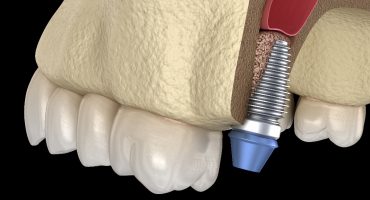There are numerous studies and reports that have critically examined the possible effects of amalgam on the human body and continue to address it today. Amalgam critics will certainly have taken note of a message: From July 2018, dentists in the European Union will only be allowed to use amalgam fillings in different cases in exceptional cases. This group of people includes:
• children,
• pregnant women,
• breastfeeding mothers.
Finally, in the year 2020, it will be extensively examined whether the use of amalgam fillings can be completely dispensed with from the year 2030 onwards. However, this should not be done on the basis of actually identified health risks, but prophylactically as well as for reasons of environmental protection.
What is amalgam?
Amalgam is a mixture of different metals as well as mercury. For the filling of teeth, it is very popular because of its soft and easily moldable structure. It is especially in the posterior region - in the great chewing pressure exists - as a means of choice. However, it is mainly negatively rated in public due to themercury it contains. Amalgam is the best researched and oldest material of the dentist, which is usually tolerated by most patients without problems. The amount of mercury contained is roughly comparable to the level of mercury in the diet.
The advantages and disadvantages of amalgam fillings
Basically, the material amalgam as tooth material offers many advantages. So it has anantibacterial effect and prevents tooth decay from spreading. In addition, amalgam scores in terms of durability and is roughly comparable to the durability of gold fillings.
A disadvantage of amalgam fillings is the aesthetics, which can not be adapted to the color of the tooth due to their nature. So amalgam fillings are usually used only in the non-visible area.
What is the durability of amalgam fillings?
General information on the durability of a filling can generally hardly be made and can only be made on the basis of statistical surveys. In the individual case, not only the filling material, but also the size and position of the filling are decisive for the durability. In addition, the dental care behavior of the patient has a significant influence on the life of a filling. So if the patient cares for athorough dental care, the fillings can last longer than average.
For amalgam, the average shelf life is between seven and eight years. Afterwards, the condition of the filling should definitely be checked by a dentist and the filling should be replaced if necessary.
Reimbursement costs of Amalgam Fillings
With a few exceptions, only the costs of amalgam fillings are fully covered by the statutory health insurance funds. Therefore, if the patient wishes to have a ceramic filling in the posterior region, the statutory health insurance companies only contribute proportionally to the total costs.
Have amalgam fillings removed?
Since there are no proven health restrictions on the use of amalgam in dental fillings, it makesno sense from the point of view of many experts to remove intact amalgam fillings and exchange them with other fillings. The amount of mercury released when drilling in the filling is more harmful to the patient than continuing to live with the amalgam filling - that is the conclusion of most experts.




